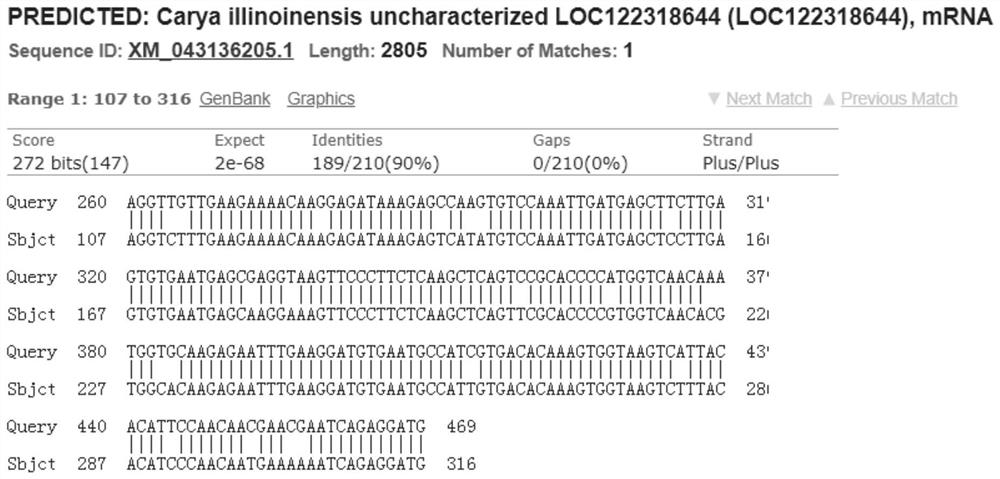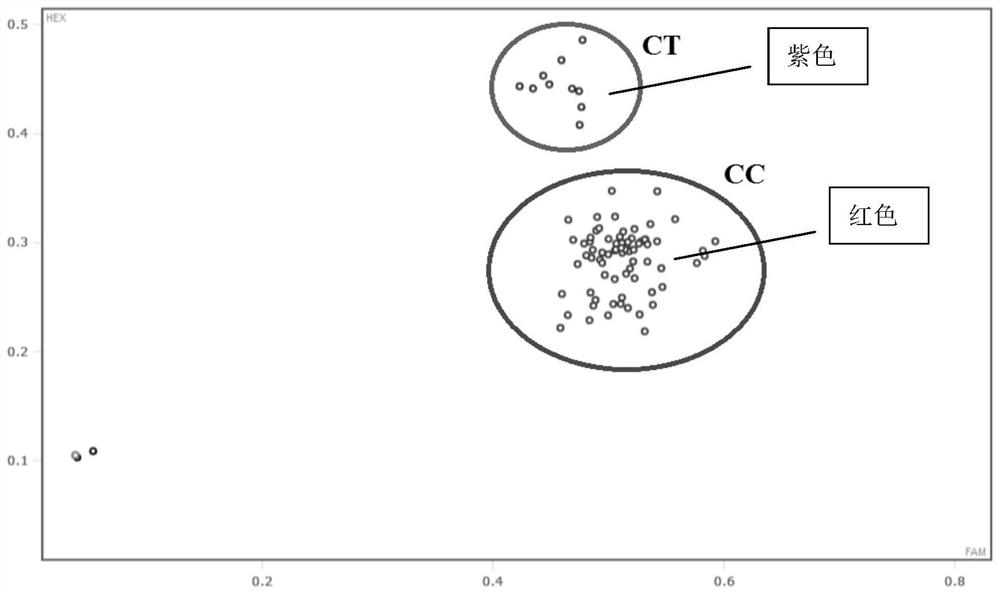KASP molecular marker for predicting soluble solids of waxberry fruits and application of KASP molecular marker
A soluble and solid technology, applied in the field of KASP molecular markers, can solve the problems of prolonging the breeding cycle, inability to aggregate good traits, increase breeding workload, etc., and achieve the effects of improving detection efficiency, good taste, and reducing time and labor costs
- Summary
- Abstract
- Description
- Claims
- Application Information
AI Technical Summary
Problems solved by technology
Method used
Image
Examples
Embodiment 1
[0038] Example 1 Development of KASP molecular markers for predicting soluble solids in bayberry fruit
[0039] 1. Excavation of TSS gene in red bayberry fruit
[0040] Based on the previous investigation of germplasm resources, the germplasm resources of bayberry production areas across the country were sorted out. A total of 173 germplasm resources were collected, genome resequencing was carried out, and the fruit TSS content of 136 germplasm resources was determined. Genome-wide association analysis was performed on the genomic data and TSS, and a SNP was detected at the 9,667,472bp position of chromosome 5, and the target gene was found to be MrChr5G1084( figure 1 a and b), the target gene MrChr5G1084 has the sequence shown in Seq ID NO.4 in the sequence listing.
[0041] 2. Function prediction of gene MrChr5G1084
[0042] The CDS sequence of MrChr5G1084 was compared by Blast at NCBI, and it was found that the similarity with the gene reported by the previous sequence n...
Embodiment 2
[0043] Embodiment 2 is used for the design of the primer combination of KASP detection molecular marker
[0044] In this embodiment, according to the SNP site obtained in Example 1, the upstream 50bp sequence (Seq ID NO.5) and the downstream 50bp sequence (Seq ID NO.6) of the SNP at position 9,667,472bp on chromosome 5 were searched, and the Cereals DB website was used. The KASP primer numbered KASP-Primer-1084 was designed to detect the genotypes of red bayberry fruit soluble solids. The primer sequences are shown in Table 1, wherein the 5' end of forward primer 1 has a FAM fluorescent signal label, and the 5' end of forward primer 2 has a HEX fluorescent signal label. The primer combination sequence can specifically combine with the corresponding sequences upstream and downstream of the SNP site.
[0045] Table 1 KASP-Primer-1084 primer sequence
[0046]
Embodiment 3
[0047] Example 3 Application of KASP Molecular Markers
[0048] 78 germplasms of Myrica rubra were used as test materials, and the TSS content in fruit ripening period was determined (Table 2). The DNA of 78 germplasm materials of Myrica rubra was extracted by CTAB method.
[0049] Utilize the KASP-Primer-1084 primer that embodiment 2 provides to carry out germplasm genotype detection, the reaction system is as follows:
[0050] Using 1.6 μl PCR reaction system, containing 0.8 μl KASP master mix (LGC, BiosearchTechnologie), 0.05 μl each primer (Primer_AlleleFAM, Primer_AlleleHEX, Primer_Common) and 0.8 μl DNA (5-10ng / μl), according to IntelliQube instrument (LGC, Biosearch Technologies) using instructions for PCR analysis, the PCR reaction program is: 95 ° C pre-denaturation, 15 min; 95 ° C denaturation 20 s; Annealing at 57°C for 60s, a total of 30 cycles.
[0051] Primer KASP-Primer-1084 detected two genotypes, namely CT and CC ( image 3 ). Depend on image 3 It can b...
PUM
 Login to View More
Login to View More Abstract
Description
Claims
Application Information
 Login to View More
Login to View More - R&D
- Intellectual Property
- Life Sciences
- Materials
- Tech Scout
- Unparalleled Data Quality
- Higher Quality Content
- 60% Fewer Hallucinations
Browse by: Latest US Patents, China's latest patents, Technical Efficacy Thesaurus, Application Domain, Technology Topic, Popular Technical Reports.
© 2025 PatSnap. All rights reserved.Legal|Privacy policy|Modern Slavery Act Transparency Statement|Sitemap|About US| Contact US: help@patsnap.com



